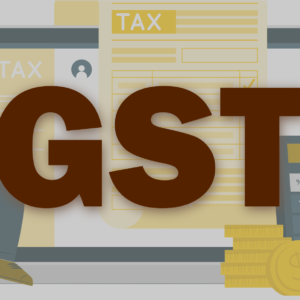Apprenticeship is a link between Industry and Academia as well as a time tested institution for training and introducing students to the world of manufacturing and commerce.
The National Policy on Skill Development and Entrepreneurship, 2015 focuses on apprenticeship as one of the key components for creating skilled workforce in India. Apprenticeship training can play a major role for on-the-job training (OJT), where youth can acquire skills by training on the industry shop floor, and earn stipend at the same time, for financial support. Globally, apprenticeship is considered as the best model for skill acquisition and earning while learning.
In the Indian context, the Apprentices Act, 1961 and the Apprenticeship Rules, 1992 were enacted with the objective to meet the demand of skilled workforce, to promote industrial economy, and to provide experiential learning opportunities to the youth. The Ministry of Skill Development and Entrepreneurship (MSDE) launched the National Apprenticeship Promotion Scheme (NAPS) on 19th August 2016 to provide financial incentives to the establishments engaging apprentice under the Apprentices Act, 1961.
NAPS-2
The guidelines for the implementation of National Apprenticeship Promotion Scheme-2 (NAPS-2) were introduced by the MSDE on 25th August, 2023. NAPS-2 aims to promote apprenticeship training in the country, by providing partial stipend support to the apprentices engaged under the Apprentice Act, 1961, undertaking capacity building of the apprenticeship ecosystem, and providing advocacy assistance to the stakeholders.
It builds upon the efforts of the Government of India towards improving ease of doing business by simplifying processes of apprenticeship engagement and further accelerating the momentum created by the previous version of the scheme, i.e., NAPS.
Objectives of NAPS-2
a) To develop skilled workforce for the economy by promotion of on-the-job experiential training.
b) To encourage establishments to enroll apprentices by sharing partial stipend support to the apprentices.
c) To provide up-skilling opportunities for candidates who have undergone short-term skill training offered by various Central and State Government initiatives.
d) To encourage enrollment of apprentices in small establishments especially Micro, Small and Medium Enterprises (MSMEs), and those located in the under served areas such as aspirational districts and North-East Region.
Budget support and target for achievement
NAPS-2 is a Central Sector Scheme (100% funded by the Central Government) and is one of the sub-components under the umbrella scheme of “Skill India Programme‟. Under NAPS-2, a budget of Rs 1,942 crore has been allocated for four years from FY 2022-23 to FY 2025-26. The target is to enroll 46 lakh apprentices over a period of the said four years.
Concepts under NAPS-2
a) Apprenticeship Training
Apprenticeship training means a course of training in any industry or establishment undergone in pursuance of a contract of apprenticeship on prescribed terms and conditions, which may be different for different categories of apprentices. Under the scheme, training will be imparted in Designated Trades and Optional Trades.
b) Designated Trades (DT)
Designated Trade means any trade or occupation or any subject field in engineering or non-engineering or technology or any vocational course which the Central Government, after consultation with the Central Apprenticeship Council (CAC), may, notify in the Gazette. Duration of apprenticeship training in DT for Industrial Training Institutes‟ (ITIs) pass-out candidates will ordinarily be one year. Duration of apprenticeship training in DT for fresher / non-ITI pass-out candidates will ordinarily be two (2) years.
c) Optional Trades (OT)
Optional Trade means any trade or occupation or any subject field in engineering or non-engineering or technology or any vocational course as may be determined by the employer. Employer refers to any industry/ business/ organization unit for the scope of implementation of this scheme. Duration of apprenticeship training for OT is six months, nine months, and twelve months. In certain cases, the duration can exceed one year, subject to the approval from MSDE.
Compliance with National Skills Qualifications Framework (NSQF) under NAPS-2 will not be mandatory. However, partial stipend support by the Government to the apprentices will be restricted to NSQF aligned courses.
Eligibility to avail benefits
Minimum age for an apprentice is 14 years, and 18 years for designated trades related to hazardous industries, as per Section 3(a) of the Apprentices Act, 1961. Apprenticeship training is primarily a transition from academia to workplace, and therefore, to avail partial stipend support by the Government, at the time of registration the upper age limit should be 35 years.
Basic training requirements
In case of DT, notified through the Gazette, the duration of basic training is as per the approved course. In case of OT, basic training is embedded in the course duration of apprenticeship. It is of minimum two weeks duration before the “On-the-Job-Training” (OJT ) and is focused on orientation/ induction into the establishment and which include an overview of basic hygiene, occupational health and safety, protocols for handling of hazardous material, etc.
No reimbursement of basic training cost is provided under NAPS-2, both for DT and OT.
Payment of Stipend and funding support under NAPS-2
Stipend to the apprentices is to be paid by the employer as per the minimum rates prescribed under the Rule 11 of the Apprenticeship Rules, 1992. The existing minimum prescribed rates of stipend per month are provided below:
| S. No. | Category | Minimum Stipend rate (In Rs. Per month) |
| I | School pass-outs (Class 5th – Class 9th) | 5,000 |
| ii | School pass-outs (class 10th) | 6,000 |
| iii | School pass-outs (class 12th) | 7,000 |
| iv | National or State Certificate holder | 7,000 |
| v | Technician (vocational) apprentice or Vocational Certificate holder or Sandwich Course (Students from Diploma Institutions) | 7,000 |
| vi | Technician apprentices or Diploma holder in any stream or Sandwich Course (Students from Degree Institutions) | 8,000 |
| vii | Graduate apprentices or Degree apprentices or Degree in any stream | 9,000 |
If the employer decides to participate in NAPS-2, Partial stipend support by GoI under NAPS-2 is limited to 25% of stipend paid, up to a maximum of Rs.1,500 per month, per apprentice during the training period. The stipend support by GoI is paid through Direct Benefit Transfer (DBT) to the bank account of apprentices.
Under NAPS-2, establishment has to pay its share of the stipend (minimum 75%) to the apprentices as per the apprenticeship contract. On confirmation of payment of establishment’s share of stipend, Government’s share of stipend is transferred directly to the bank account of apprentice through DBT.
No stipend support will be available under NAPS-2 to the Central and State Government Departments and Central and State Public Sector Undertakings/Enterprises, including Public Sector Banks. Large private organizations are encouraged to join a “Give It Up Campaign” and forego the stipend support by GoI under the scheme.
Fund flow mechanism for Government’s contribution
The funds under NAPS-2 are be allocated as grants-in-aid by MSDE to National Skill Development Corporation (NSDC) through Public Financial Management System (PFMS). Upon confirmation of the payment of establishment’s share of stipend, NSDC transfers the partial stipend support by GoI, through DBT to the bank accounts of the apprentices.
As mandated in the Rule 11(3) of the Apprenticeship Rules, 1992, the establishment pays its share of stipend, to the bank accounts of the apprentices, by the tenth of the following month. Post payment of the stipend by the establishment, DBT is initiated within 72 working hours. The DBT payments are streamlined by digital credentialing of apprentices and establishments (e-KYC, linkage with PFMS, Aadhaar-seeded bank accounts of apprentices etc.)
Implementing, monitoring, and promotion agencies
Ministry of Skill Development and Entrepreneurship (MSDE): MSDE is responsible for the overall regulation, management, and monitoring of NAPS-2.
National Council for Vocational Education and Training (NCVET): NCVET is the overarching regulator establishing regulations and standards to ensure quality in the Technical and Vocational Education & Training (TVET) space.
Regional Directorate of Skill Development & Entrepreneurship (RDSDEs): They are responsible for the promotion, implementation, monitoring, and supervision of NAPS-2, including approval of contracts, examination, and certification of the apprentices, for their respective jurisdictions. They are also responsible for robust coordination with the State Government(s)/Union Territory (UT) Administration for enhancing stakeholder capacity building and awareness creation through campaigns, melas, workshops, seminars, etc.
State Government/Union Territories (UT) Administration: As per the Apprentices Act, 1961, the respective State Government and UT Administration are the appropriate authorities for the implementation of apprenticeship training for both Designated and Optional Trades, in respect of all establishments under their respective jurisdictions, for which they appoint State Apprenticeship Advisers (SAAs).
State Apprenticeship Advisers (SAAs): As per the Apprentices Act, 1961, the SAAs are appointed as Apprenticeship Advisers (AAs) in respect of Designated and Optional Trades for all establishments under the State Government jurisdiction. They are responsible for the promotion, implementation, monitoring, and supervision of NAPS-2, including approval of contracts, examination, and certification of the apprentices, for their respective jurisdictions. They are also responsible for stakeholder capacity building and awareness creation through campaigns, melas, workshops, seminars, etc., in coordination with the concerned RDSDEs. SAAs may appoint the Mission Directors (MDs) of the respective State Skill Development Missions (SSDMs) as AAs for Optional Trades.
National Skill Development Corporation (NSDC): NSDC is responsible for implementing, monitoring and supervision of apprenticeship in Optional Trades, through Sector Skill Councils (SSCs), for establishments under the Central Government jurisdiction. NSDC manages the apprenticeship portal and releases partial stipend support by the GoI to apprentices, for both Designated and Optional Trades via DBT. NSDC is also responsible for stakeholder capacity building and engagement; awareness creation through campaigns, melas, workshops, seminars, etc.; and advocacy and promotional activities.
Sector Skill Councils (SSCs): The SSCs, under the aegis of NSDC, are implementing apprenticeship training in respect of Optional Trades for all establishments under the Central Government jurisdiction. They are responsible for the promotion, implementation, monitoring, and supervision of NAPS-2, including approval of contracts, examination, and certification of the apprentices, for their respective jurisdictions. They are also responsible for stakeholder capacity building and awareness creation through campaigns, melas, workshops, seminars, etc.
Industrial Training Institutes (ITIs): Private and Government ITIs create awareness about apprenticeship and act as facilitators between their students and establishments for undertaking apprenticeship training. They undertake apprenticeship promotional activities including organizing melas, workshops, seminars, etc in their respective ITIs. ITIs also track their students during apprenticeship and subsequent job placements for a minimum period of one year. They seek feedback from the employers on the quality and comprehensiveness of training imparted by the ITIs to improve the employability of their students.
Third Party Aggregators (TPAs): Empaneled TPAs by MSDE are the key partners towards bridging the demand of establishments for apprentices and the candidates aspiring to undertake apprenticeship training, with a special focus on MSMEs. They play key role in mobilizing and counseling aspiring apprentices, meeting prescribed curriculum requirements, processing claims on behalf of establishments, facilitating assessments and issuing certifications. TPAs proactively participate in the overall promotion of the scheme. They also facilitate and track placements of the apprentices for at least one year after apprenticeship training. TPAs submit a monthly performance report to NSDC/MSDE as per the TPA guidelines for effective progress tracking and monitoring.






